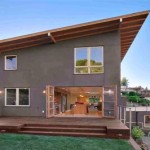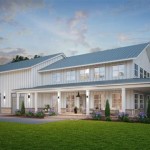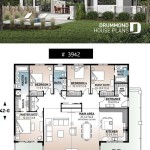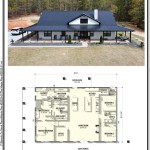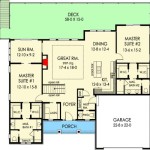2100 Sq Ft House Plans With 4 Bedrooms: A Comprehensive Overview
Designing a home involves careful consideration of spatial requirements, functionality, and aesthetic appeal. For families requiring ample living space, a 2100 sq ft house plan with four bedrooms presents a viable solution. Such plans often strike a balance between comfortable living areas, private bedroom zones, and essential amenities. The following article examines various aspects of these house plans, including common layouts, design considerations, and factors influencing cost and customization.
A 2100 sq ft house, while substantial, necessitates strategic space planning. Maximizing usable area while maintaining a sense of openness contributes to the overall livability of the home. Four bedrooms within this square footage require careful allocation of space to ensure each room is adequately sized and functional. Consideration should be given to the arrangement of living areas, kitchen, bathrooms, and storage to optimize flow and convenience.
Common Layout Designs for 2100 Sq Ft 4-Bedroom Homes
Several layout configurations are frequently employed in 2100 sq ft four-bedroom house plans. These variations cater to different lifestyle preferences and site-specific constraints. Some prevailing designs include:
Ranch-Style: A ranch-style home is typically a single-story structure characterized by its elongated, low-profile design. In a 2100 sq ft four-bedroom ranch, the bedrooms are often located along one side of the house, while the living areas, kitchen, and dining space occupy the opposite side or center. This layout promotes ease of accessibility and can be particularly suitable for individuals with mobility concerns.
Two-Story: Two-story plans maximize vertical space, allowing for a smaller footprint. This can be advantageous in areas with limited lot sizes. Typically, the bedrooms are situated on the upper level, providing a clear separation between living and sleeping areas. The main floor generally accommodates the living room, kitchen, dining room, and potentially a half-bathroom or a fourth bedroom that can function as a guest room or home office.
Split-Level: A split-level design incorporates short flights of stairs to connect different levels within the house. This layout can provide a degree of privacy between living areas and bedrooms. Common configurations include a main level with the living room, kitchen, and dining room, an upper level with bedrooms, and a lower level that may house a family room, laundry area, or additional storage.
Open-Concept: An open-concept design emphasizes the seamless integration of living spaces, particularly the living room, kitchen, and dining area. This creates a more social and interactive environment. In a 2100 sq ft four-bedroom home, an open-concept layout can enhance the feeling of spaciousness and facilitate natural light flow. However, careful consideration should be given to noise control and zoning to ensure functionality.
The selection of a specific layout depends on factors such as the homeowner's preferences, the terrain of the lot, and local building codes. Each design offers distinct advantages and disadvantages in terms of space utilization, cost, and energy efficiency. Consulting with an architect or designer can help determine the most suitable layout for individual needs.
Key Design Considerations for 4-Bedroom Homes
Designing a 2100 sq ft four-bedroom home necessitates careful attention to several key considerations to ensure functionality, comfort, and aesthetic appeal. These include:
Bedroom Size and Placement: The dimensions of each bedroom should be adequate to accommodate a bed, storage furniture, and provide sufficient circulation space. The master bedroom typically receives a larger allocation of space compared to the secondary bedrooms. The placement of bedrooms should consider factors such as noise levels, privacy, and proximity to bathrooms. Master bedrooms are often situated away from the other bedrooms to enhance privacy. The inclusion of walk-in closets can significantly enhance bedroom functionality.
Bathroom Configuration: The number of bathrooms and their configuration is critical in a four-bedroom home. A master bathroom connected to the master bedroom is a common feature. An additional full bathroom serves the remaining bedrooms. A half-bathroom, or powder room, near the living areas is convenient for guests. The size and layout of bathrooms should allow for comfortable use and adequate storage. The selection of fixtures and finishes can significantly impact the overall aesthetic and functionality of the bathrooms.
Kitchen Design and Functionality: The kitchen is a central hub in most homes, and its design should prioritize functionality and efficiency. Ample counter space, storage cabinets, and modern appliances are essential. A well-designed kitchen layout should facilitate ease of movement between the cooking, preparation, and cleaning areas. The inclusion of a kitchen island or breakfast bar can provide additional workspace and seating. The kitchen should be well-ventilated to prevent the accumulation of odors and humidity.
Living Area Arrangement: The living area should be designed to accommodate both everyday living and entertaining guests. The size and layout of the living room should be proportionate to the overall square footage of the house. The placement of windows and doors should maximize natural light and ventilation. The selection of furniture and décor should complement the overall design aesthetic and create a comfortable and inviting atmosphere.
Storage Solutions: Adequate storage space is essential for maintaining an organized and clutter-free home. Closets, cabinets, and shelving should be strategically located throughout the house to accommodate clothing, household items, and personal belongings. The inclusion of a pantry in the kitchen and a linen closet near the bathrooms can significantly enhance storage capacity. Consider incorporating built-in storage solutions to maximize space utilization.
Traffic Flow and Circulation: The layout of the house should facilitate smooth and efficient traffic flow between different areas. Hallways should be wide enough to accommodate comfortable passage. The placement of doorways should minimize congestion and prevent obstructions. The arrangement of furniture should not impede movement within rooms.
Factors Influencing Cost and Customization
The cost of constructing a 2100 sq ft four-bedroom home can vary significantly depending on several factors. These factors include:
Location: The cost of labor and materials can vary considerably depending on the geographic location. Areas with higher demand for construction services and higher costs of living generally result in higher construction costs.
Materials and Finishes: The selection of building materials and finishes can significantly impact the overall cost of the project. High-end materials, such as granite countertops, hardwood flooring, and custom cabinetry, will increase the cost compared to more affordable options. The choice of appliances, fixtures, and lighting can also influence the budget.
Design Complexity: Intricate architectural designs and custom features will generally increase construction costs. Simple, straightforward designs are typically more cost-effective. The complexity of the roofline, the number of windows and doors, and the amount of custom millwork can all influence the price.
Labor Costs: Labor costs account for a substantial portion of the overall construction budget. The availability of skilled labor and local wage rates can impact the final cost. Hiring experienced and qualified contractors is essential for ensuring quality workmanship and avoiding costly mistakes.
Site Conditions: The condition of the building site can also influence construction costs. Sites with challenging terrain, poor soil conditions, or the presence of underground utilities may require additional preparation work, such as excavation, grading, or soil remediation.
Customization Options: Customizing a house plan to meet specific needs and preferences can add to the overall cost. Making changes to the layout, adding or modifying features, or incorporating unique design elements will typically result in higher construction expenses. However, customization allows homeowners to create a home that perfectly suits their lifestyle and requirements.
Homeowners should carefully consider their budget and prioritize their needs and preferences when making design decisions. Working with a qualified architect or builder can help ensure that the project stays within budget and that the final product meets expectations. Value engineering, which involves finding cost-effective alternatives to specific design elements, can also help to reduce expenses without compromising quality.
Ultimately, a 2100 sq ft house plan with four bedrooms provides a versatile option for families seeking a balance between space, functionality, and affordability. Thoughtful planning and design considerations are paramount to achieving a comfortable and livable home that meets the specific needs of its occupants. Understanding the various layout options, design considerations, and factors influencing cost and customization empowers homeowners to make informed decisions and create a home that they will enjoy for years to come.

House Plan 58575 Ranch Style With 2100 Sq Ft 4 Bed 2 Bath

Pin On Floor Plans

2100 Sq Ft Modern Farmhouse Plan With Front Facing Garage 83625crw Architectural Designs House Plans

4 Bedroom 3 Bath 1 900 2 400 Sq Ft House Plans

Farmhouse Style House Plan 3 Beds Baths 2100 Sq Ft 21 107 Houseplans Com

2100 Sq Ft Looks Pretty Good Would Want To Make Mbr Larger And The Screened Porch Deeper H Country Style House Plans Ranch Best

House Plan 59130 Traditional Style With 2100 Sq Ft 3 Bed Ba

2100 Square Feet House Plan Sq Ft Home Design

Plan 51414 One Story Craftsman House Plans

2100 Sq Ft 4 Bedroom Mixed Roof House Plan Kerala Home Design And Floor Plans 9k Dream Houses

